Civil Liberties, Criminalizing Dissent, Habeas Corpus, Human Rights, Military Tribunal, Supreme Court, Torture, Truth to Power
Podcast: Play in new window | Download
Updates:
——

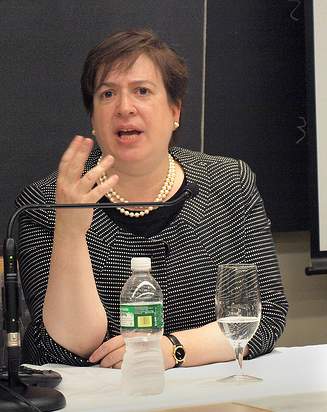
Kagan “Loves” the Federalist Society
Hosts discuss Elena Kagan’s background with Francis Boyle, Professor of law at the University of Illinois. Boyle is author of “Tackling America’s Toughest Questions.” In his article titled – – Supreme Court Pick: Kagan “Loves” the Federalist Society, – – Boyle notes Kagan explicitly endorsed the Bush administration’s bogus category of ‘enemy combatant,’ whose implementation has been a war crime in its own right. He also writes that “Kagan has actually said ‘I love the Federalist Society.’ Almost all of the Bush administration lawyers responsible for its war and torture memos are members of the Federalist Society. Read – Dean Elena Kagan: Harvard’s Gitmo Kangaroo Law School — The School for Torturers
Law Professor, Francis Boyle:
- She has fully defended the hideous Bush atrocities, civil rights, human rights, civil liberties.
- No retreat or abandonment of the Bush positions.
- She (Kagan) did write this tome in the Harvard Law Review, equivalent to the Federalist Society, unitary executive power theory of the presidency.
- She’d be a total disaster on the cases that really count for the future of the US Constitution and the Bill of Rights.
- She’s a neo-conservative and has no qualifications to speak of.
- (She) hired Jack Goldsmith, author of torture memos and helped set up kangaroo court system in Guantanamo. We are still fighting Kagan supporting the Bush war on terrorism.
- Kagan stated on National Public Radio on December 22, 2009, “I Love The Federalist Society”
- Obama and his people know that Kagan will be the spear carrier for presidential powers on the Supreme Court
- This is a very dangerous time for the future of our republic and Constitution. The statement that she cares for the common people. . . she’s an elitist snob.
- There she is promoting globalization at Harvard Law School?? Hiring people to teach “globaloney” just to lick the boots of Larry Summers? While dean at Harvard Law School, she was moonlighting at Goldman Sachs payroll.
- This is all incredibly incestuous. Unlike Bush who wasn’t a lawyer, Obama taught Constitutional Law at the University of Chicago Law School, he should know better.
Guest – Professor Francis Boyle, A scholar in the areas of international law and human rights, Professor Boyle received a J.D. degree magna cum laude and A.M. and Ph.D. degrees in political science from Harvard University. Prior to joining the faculty at the College of Law, he was a teaching fellow at Harvard and an associate at its Center for International Affairs. He also practiced tax and international tax with Bingham, Dana & Gould in Boston.
He has written and lectured extensively in the United States and abroad on the relationship between international law and politics. His eleventh book, Breaking All the Rules: Palestine, Iraq, Iran and the Case for Impeachment was recently published by Clarity Press. His Protesting Power: War, Resistance and Law has been used successfully in anti-war protest trials.
——-

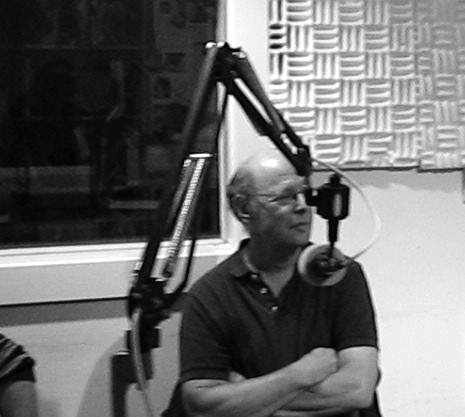

In Memory of Attorney Rhonda Copelon
Hosts talk with Cathy Albisa, executive director of the National Economic and Social Rights Initiative. about the human rights legacy of Rhonda Copelon. Rhonda had a huge influence on changing international law for human rights. She founded the International Women’s Human Rights Law Clinic.
Lawyers You’ll Like series with Rhonda Copelon. Part 1 / Part 2.
Attorney Cathy Albisa:
- I worked with Rhonda at CUNY, we both co-counseled with CCR on a couple of cases.
- I met Rhonda on a car ride, a 25 hour car ride. We spent 25 hours talking about human rights in the United States. Rhonda had a huge influence on NESRI
- Rhonda never stopped lamenting Harris v McRae, she was still furious and outraged.
- The assumption embedded in that case is the court is saying, we’re not responsible as a society, the poverty of this woman. Copeland Fund For Gender Justice. Rhonda thought it was critical that a progressive gender perspective be embedded into some body of work that really looked at these gender issues in a cross cutting way, that understood the relevance of poverty, the relevance of race, the relevance of sexual minorities.
- Rhonda was not a wealthy woman, she was a law professor and saved her money. She gave 1 million dollars for this fund and that was everything. The case that she says always saved my life was Filártiga v. Peña-Irala.
- She founded the International Women’s Human Rights Law Clinic. What she did with that clinic is challenge the traditional model of human rights law coming out of the United States.
- She made no claims of being objective, she was on the side of victims, of people with similar politics to her own.
- This changed international law. Rhonda: Don’t disregard the banal, the ordinary things that actually represent deep violations.
- The way Rhonda went about things, she merged intellectual capital with a strategic ferocity and personal good will and relationship building.
- She thought it was very important that people understand they’re part of a broad social justice and human rights movement.Cathy Albisa joins us today to talk about her work with the National Economic and Social Rights Initiative and Rhonda’s work as legal adviser to the Women’s Caucus for Gender Justice.
Guest- Cathy Albisa, is a constitutional and human rights lawyer with a background on the right to health. Ms. Albisa also has significant experience working in partnership with community organizers in the use of human rights standards to strengthen advocacy in the United States. She co-founded NESRI along with Sharda Sekaran and Liz Sullivan in order to build legitimacy for human rights in general, and economic and social rights in particular, in the United States.
——————————————–
Civil Liberties, Habeas Corpus, Human Rights, Prosecution of the Bush Administration, Surveillance, Targeting Muslims, Truth to Power
Podcast: Play in new window | Download
Updates:
—-

Update on BP Oil Disaster in the Gulf of Mexico
There are reports that nearly 200 thousand gallons of crude oil is spilling into the Gulf of Mexico each day as engineers work to cap the well head. Meanwhile an oil dispersant is deployed on the water surface to break up the oil slick before it reaches sensitive estuaries and shoreline. On the edge of what human engineering can accomplish, BP says it would use a giant, 100-ton dome-like device placed over the wellhead that might collect oil gushing out of the well.
Jackie Savitz:
- 200 thousand gallons per day, possibly 10 times more than that. It’s been gushing for almost 2 weeks.
- May take another week to stop, not guaranteed. Back up plan could take months.
- Gulf of Mexico: rich area biologically, a lot of our shellfish come from there. Many of the species that make their home in the Gulf are endangered, such as sea turtles, North Atlantic Right Whale, Bluefin Tuna, Snapper, Grouper
- In many cases, these animals are using the Gulf as a nursery. We may never fully know the impacts on populations of these animals. Fishing ban.
- Why do they let companies like BP drill in these dangerous circumstances that can pose these types of impacts without a plan? The public was convinced on offshore drilling by 3 myths. 1. Lower the price of gas at pump. 2 Energy Independence. 3. Drilling was safe.
- Why would we let these companies gamble with our lifestyle with no actual return.
- We’re looking at a potential reset moment. Politicians respond to public sentiment.
- We’re working toward a ban on exploratory drilling. This was an exploratory well.
Guest – Jackie Savitz, Senior Campaign Director for Oceana’s Pollution Campaigns. Savitz has shaped and led campaigns and projects dealing with global warming pollution from ships, mercury contamination of fish, and cruise ship pollution among other issues. Savitz has a background in marine biology and environmental toxicology combined with more than fifteen years of policy analysis experience through which she has developed expertise on a variety of pollution issues involving toxic contamination, water pollution and air pollution
————

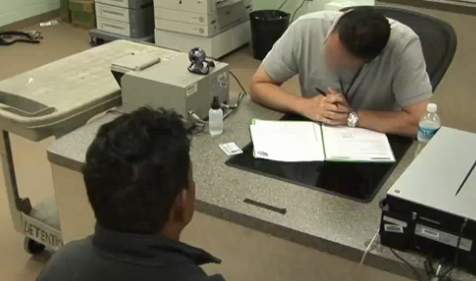
ICE Media Spin / Immigration Law Movement
Center for Constitutional Rights staff attorney, Sunita Patel joins us today to give an update on the recent six-page internal memo from United States Immigration and Customs Enforcement (ICE) that was leaked to the press. The memo was a response to civil rights groups Uncovering the Truth on ICE and Police Collaboration, but specifically aiming at their campaign of week long rallies in 14 cities. The week of advocacy was launched on Tuesday in conjunction with a FOIA lawsuit filed in the Southern District of New York by the National Day Laborer Organizing Network, the Center for Constitutional Rights and the Immigration Justice Clinic of Benjamin Cardozo School of Law to demand records relating to the Secure Communities program.
Sunita Patel:
- ICE launches media offensive against community organizations. Exposed: DHS plans to publish Op Eds by the head of ICE.
- DHS interface with local law enforcement – incentives to racial profile to determine status that could lead to: Non citizens to stay in jail even if there is police misconduct or unlawful arrest
- We want more information so communities can make reasonable decisions.
- FOIA lawsuit requests information on “Secure Communities” Program, a finger printing system operating inside jails. To be deployed to all jails in US by 2013.
- We want to stop these collaborations with local law enforcements, they make the community less safe and less secure.
Guest – Sunita Patel, Center for Constitutional Rights Staff Attorney, she is involved with racial profiling, immigrant rights and other human rights litigation. Prior to her position at CCR, she held a Soros Justice Fellowship at The Legal Aid Society, Immigration Law Unit in New York where she represented immigrant detainees in removal proceedings and worked with criminal justice and human rights groups to create independent community oversight for detention operations through public accountability boards
———————
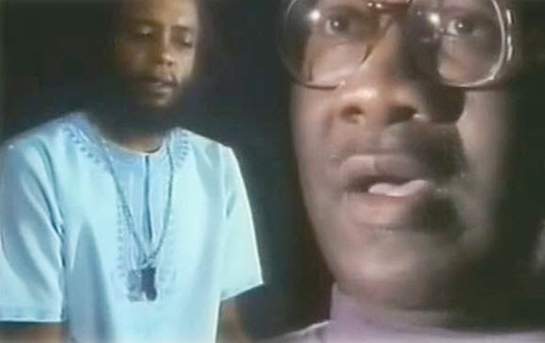
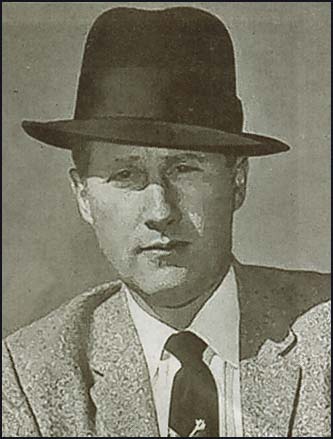
Omaha Two / Black Panthers
We talk today with Claus Walischewski, a representative of Amnesty International in Germany. Claus has been working with Amnesty International following and investigating the case of 2 former Black Panthers Ed Poindexter and Mondo we Langa (David Rice). The case is known as the Omaha 2. Amnesty International has found that the two men were unjustly convicted of murder and have been in prison since the 1970s. Amnesty has called for a retrial or release for these men.
Claus Walischewski:
- We don’t call them political prisoners because in the US you can have a fair trial.
- They were both Black Panthers in Omaha in the 1970s.
- The police answered a 9/11 call and went to a vacant building, there was a bomb in a suitcase, the police picked it up, it detonated, and the policeman was killed. The police thought it was the Black Panthers.
- Information that the FBI were working COINTELPRO in Omaha during this time.
- An individual named Dwayne Peak was arrested for the crime, and named the two Black Panthers.
- When he saw the 2 men and was asked if they were involved, he said “no.”
- The 9/11 call was not Dwayne Peak’s voice, it’s the voice of a much older man, not a 15 year old.
- Analysis has shown it’s not the same voice, still no re-trial. Caught and arrested in 1970, Poindexter 62, Mondo 67. I’ve visted them 10 years ago, they’re both very educated, no threat to anybody.
Guest – Claus Walischewski, a representative of Amnesty International
—————————————————
Afghanistan War, Civil Liberties, FBI Intrusion, Habeas Corpus, Human Rights, Prison Industry, Surveillance, Targeting Muslims, Torture
Podcast: Play in new window | Download
Updates:
—–
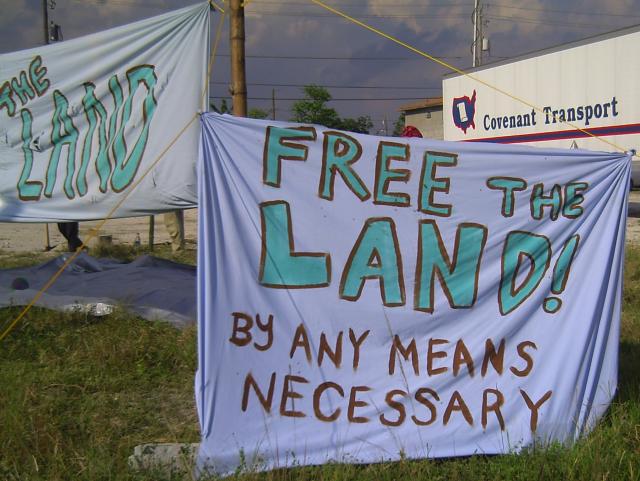
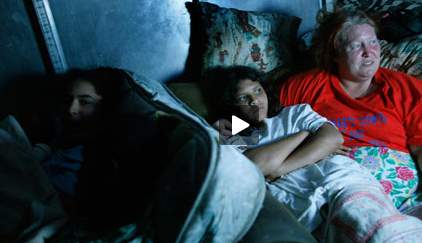
Take Back The Land and The Center For Constitutional Rights Delegation To South Africa
The national movement, Take Back the Land has demanded housing for the homeless in Miami, New York City and is in South Africa to engage in anti-eviction and land reform work. Lawyers with the Center for Constitutional Rights will also join Take Back the Land and provide legal support to the social justice movements. The two groups will be in Cape Town with the Anti-Eviction Campaign and 3 days in Durban with Abahlali bs Mjondolo or (ABM). Among the core beliefs of this project called the Center for Pan African Development are, land is an essential element of liberation, the black community must collectively control land in the black community and the path to liberation is pave through self-determination, not the accommodation of those in power.
Sunita Patel:
- The history of Apartheid is so connected to land and redistribution of land. We spent a few days in Cape Town with the Anti-Eviction Campaign. We traveled to Durban and visited with ABM there. Throughout the trip activists and community members had shared stories of displacement and mass evictions at the government’s hands, without any redress. We have a lot to learn from the movement in South Africa.
- In the United States, we can’t think beyond the private ownership of land.
- Housing is not a constitutionally protected right. Where we can gain from international human rights law, we need to infuse that into our work. The Universal Declaration of Human Rights, recognizes housing as a human right.
- South African Constitution states in articles 26 and 33 affording one house for one family.
Guest – CCR staff attorney, Sunita Patel is involved with racial profiling, immigrant rights and other human rights litigation. Prior to her position at CCR, she held a Soros Justice Fellowship at The Legal Aid Society, Immigration Law Unit in New York where she represented immigrant detainees in removal proceedings and worked with criminal justice and human rights groups to create independent community oversight for detention operations through public accountability boards.
————–
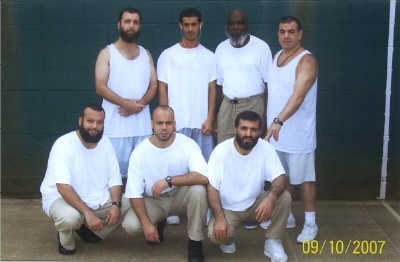

CCR Challenges Experimental Prison Units that Restrict Communication
The Center for Constitutional Rights filed a lawsuit challenging violations of fundamental constitutional rights, including the right to due process, at two experimental federal prison units called “Communications Management Units” (CMUs). The units are being used overwhelmingly to hold Muslim prisoners and prisoners with unpopular political beliefs.
CCR filed Aref v. Holder in the D.C. District Court on behalf of five current and former prisoners of the units in Terre Haute, IN and Marion, IL; two other plaintiffs are the spouses of prisoners. The CMUs were secretly opened under the Bush administration in 2006 and 2007 respectively and were designed to monitor and control the communications of certain prisoners and to isolate them from other prisoners and the outside world. More about Aref
Rachel Meeropol:
- It’s the first time we’ve seen units like this in the federal system. The Bureau of Prisons secretly created these prisons in 2006 and 2007 under the Bush Administration.
- The bureau of prisons initially offered a public comment period and were flooded with comments of what a bad idea this is. They withdrew the public comment and continued to build the prison in secret.
- There’s no meaningful process at all as to who should be put in this unit.
- The Bureau of Prisons has published very broad criteria about the types of individuals, it thinks belongs there.
- The criteria is so broad it could encompass tens of thousands of prisoners.
- When we look at who is being sent the unit, it’s mostly Middle Eastern Muslims, African Americans who have converted to Islam in prison, and also a lot of people with unpopular political views.
- One of our clients Daniel McGowan, is an environmental activist who is serving a term in prison. He never violated a prison rule, he was a low security prison for the first part of his sentence, and then without any reason, he is moved to this highly restricted unit.
- The CMU is an experiment in social isolation. Very few opportunities for visits. Uniquely cruel for individuals who have to undergo it.
- Bad public policy, these individuals are going to be released at some point.
- We are seeking to challenge the extreme limitations on their phone calls and visits.
- Most inmates get 300 minutes a month of phone calls, my clients for years had only one 15 minute call a week.
- For prisoners with large families, this is incredibly difficult. It seems to me this is truly about silencing advocacy from inside the prison.
- Some of our clients including Mr Aref were convicted on terrorism related charges, in his case material support.
- When prisons move prisoners into the CMU of extremely restricted confinement without any process or explanation, of course leads to putting prisoners in the CMU for discriminatory or retaliatory reasons.
Guest – Rachel Meeropol has worked at the Center for Constitutional Rights (CCR) since 2002. She is the co-editor and primary author of the Jailhouse Lawyers Handbook, a widely-requested resource for prisoners, and the editor of America’s Disappeared: Secret Imprisonment, Detainees, and the “War on Terror,” (Seven Stories Press, 2005).
—————–

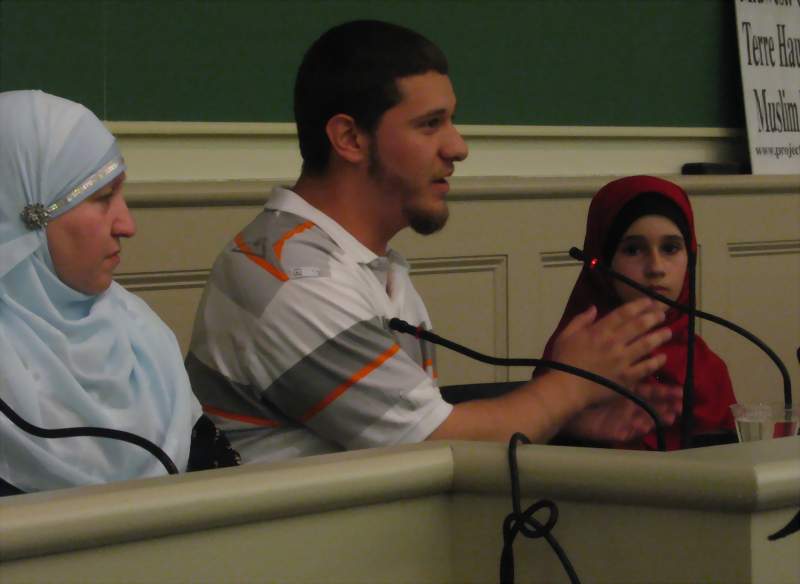
FBI Entrapment: Personal Stories of Preemptive Prosecution
We go now to hear segments from the event titled FBI Entrapment: Personal Stories of Preemptive Prosecution sponsored by the National Lawyers Guild, Middle Eastern Law Students Association (MELSA), Islamic Law Students Association (ILSA) and Law Students for Human Rights.
Families and community members gathered in a room at NYU to discuss their cases, and how their family members were entrapped by FBI informants and agent provocateur tactics. As we have reported in the past years, the FBI have used these tactics to target Muslims and others by offering money and assets within impoverished communities. Some FBI groups target mosques and incite violent action. Most informants are felons, that have made plea-deals with the FBI. As we have seen, these stories make headlines across the country on Memorial Day or the 4th of July, meanwhile, these men implicated in the FBI stings are serving long sentences. We get an inside perspective from their families. We hear from Lynne Jackson and Attorney Stephen Downs from Project Salam. We also hear from 12 year old Lejla Duka, and her cousin, family members with the Fort Dix Five case.
Lynne Jackson / Attorney Stephen Downs
- CCR filed Aref v. Holder in the D.C. District Court
- Aref/Hossain have left behind 2 families, 10 children, ranging in ages 4-16 years old.
- What is going on with our country?
- We formed Project Salam, we need to look at all these case together, there are hundreds of cases.
- We’ve had no response at all from President Obama or Attorney General Holder
- The Cheney one percent doctrine. If there is one percent chance that a Muslim will commit a terrorist act down the road you have to take them out.
- One of the worst things you can do as Muslim is be generous. The government made good use of the material support for terrorism statute.
- Certainly from my point of view, as a lawyer I assume every conversation I have is being monitored. I think all of you should to.
- Check out prisoner database at CMU’s (PDF)
Lynne Jackson, volunteer and co-founder of Project Salam, Attorney Stephen Downs, a retired New York State attorney and a volunteer attorney for the Yassin Aref case. Listen to last year’s Law and Disorder interview.
————————————————————————–
Civil Liberties, Habeas Corpus, Human Rights, Truth to Power
Podcast: Play in new window | Download
Updates:
—
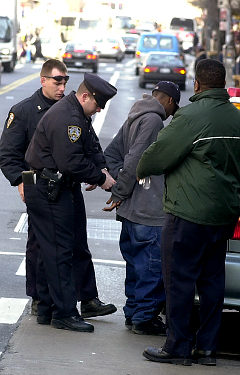

CCR’s Second Stop and Frisk Lawsuit: Floyd, et al. v. City of New York
In the beginning of 2009, statistics show that 84 percent of the people who were stopped and frisked by the New York City Police Department were black or Hispanic. Very few stops yielded any contraband or weapons. Critics call these stops, racially oriented harrassement and despicable. Not everyone stopped by police is frisked however. About 59.4 percent of all Hispanics stopped were also frisked, 56.6 percent of blacks stopped were frisked and 46 percent of whites stopped were frisked. Whites had composed less than 16 percent of these stops in early 2009. The New York City Police Department insists the stops help fight crime. The Center for Constitutional Rights has filed a class-action lawsuit against the city and the Police Department over the stops. Please visit MalcolmXGrassRootsMovement.
Plaintiff David Floyd:
- The case is surrounding stop and frisk cases, particularly in black and Latino communities.
- I’ve been stopped in community over the past couple years. I live in Parkchester in the Bronx.
- Both times, I was stopped, I was going about my daily life, I work and go to school. The second time I was stopped, was on the premises where I live. The first time I was stopped, they gave no probable cause and I asked for names and badge numbers.
- The second time they said there were a string of robberies in the neighborhood. It’s a script that we found, the police go by continually.
- It’s almost as if you’re walking down the street and somebody jumps up out of no where to rob you. They go in your pockets, they take your wallet, but in this instance, what they try to walk away with is your dignity.
- There are ways to very calmly challenge and ask questions but they don’t like that. I ask “why is it that I’m being stopped, do you have probable cause?” Part of our response as a community has to support young people, anyone and everyone who are getting stopped illegally.
- You should make sure that they know, that you know your rights. People have cameras now, we need to make sure we document this constantly. Community members become activists so that internationally, there’s a voice that comes out.
- The securities industry is benefiting from tactics being used against black people here in the United States. Tactics that are being used against Palestinians, Iraqis, Afghans. The tactics that the NYPD think are successful are being exported into other cities. There is a veil of accountability with the CCRB
- Challenging state violence is the responsibility of those who go through it.
——
Sunita Patel:
- The important thing to remember is that the Constitution requires that police have a reasonable suspicion that a crime is about to be committed. In 2005, there were 4 hundred thousand stops.
- We also allege in our lawsuit that there is a failure to train and discipline police officers, that goes all the way up. It’s important that there is still this historic memory of Amu Dudiallo, Abner Louima.
- We are also seeking more accountability within the CCRB, the Civilian Complaint Review Board, the body to hear civilian complaints regarding the NYPD. We think the CCRB should have it’s own prosecutorial or enforcement powers. There is a sense in the community, how can we bring change about when the system is so amomous?
- We also think there has to be a change in the way that police train rookie cops and undercover police officers that are flooding communities. Make the Road By Walking / Malcolm X Grassroots Movement
- We don’t have the breakdown of arrests racially, yet. The number of stop and frisks are on the rise and we should take a stand against it. We think we will be able to obtain information about widespread practices
Guest – Sunita Patel, Center for Constitutional Rights staff attorney, Sunita is involved with racial profiling, immigrant rights and other human rights litigation.
Guest – David Floyd, plaintiff in the case and Bronx resident. MalcolmXGrassRootsMovement
—
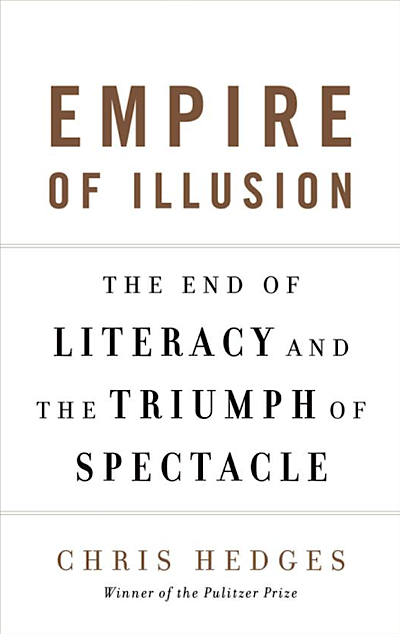

Chris Hedges – Empire of Illusion: The End of Literacy and the Triumph of Spectacle
We are delighted to have back with us, award winning journalist and author Chris Hedges. His new book Empire of Illusion: The End of Literacy and the Triumph of Spectacle thoughtfully examines the erosion of American culture and levels a heavy criticism. Chris Hedges says we are living in a totalitarian society that is image based. This image is not benign, he says. It is skillfully manipulated by for-profit corporations to get us to do things not in our interest. Right now, 40 million Americans are illiterate. In this media landscape, nuanced discussions of ideas are replaced by carnival barking and interruption, meanwhile newspapers and publishing companies are in decline. Hedges has called it a slow motion coup d’etat where democracy and the Constitution are held up as ideals while the levers of power are driven by destructive forces.
Chris Hedges:
- I think the best way to see how illusionned we are as a culture is through prism of popular entertainment.
- We’re of course a completely pornified society. The largest users of porn on the internet are teenagers.
- What are the messages being pumped out whether its the WWF or porn.
- Porn isn’t the back lit shaved bodies of the playboy channel. It’s violence and not simulated violence.
- The women are popping pain pills and require surgery after sex. When you look at the stills from Abu Gharib, they could be stills from a set of a porn film, and I don’t think that is accidental.
- The narrative that we use to explain ourselves to ourselves is no longer print based.
- 42 million in the US illiterate, 50 million semi-illiterate.
- 80 percent of American households didn’t buy a book last year. The danger of that is the images we are fed are skillfully done by those with an agenda and power. It is meant to confuse a brand with knowledge and not see the underlying structures of the corporate state.
- We are a culture severing ourselves from verifiable fact and replacing it with a culture where lies become true where opinions and facts are interchangable.
- Intellectual thought by its nature is subversive, because it questions structures and assumptions.
- I think there has been tremendous cultural transformation, with the rise of the corporate state. Our form of inverted totalitarianism, which has been designed to shut out the bottom two thirds of the country.
- The jobs that we are shedding are not coming back, we are entering a form of neo-feudalism.
- A dream is something you strive towards, an illusion is something you live in.
- The system has been so ethically perverted by corporations, that we now sit by passively and allow our for-profit health care industry to legally hold sick children hostage while parents bankrupt themselves trying to save their sons or daughters.
- What kind of society I would like to see is one wresting back the government from the hands of the corporations. Once somebody is dead, they’re not worth anything in a commodity culture.
- We have to walk out of the mainstream, don’t fall for this what Ralph Nader calls the least worst.
Guest – Chris Hedges, the author of many books specializing in American and Middle Eastern politics and society. He spent nearly two decades as a foreign correspondent in Central America, the Middle East, Africa and the Balkans. He was also the Middle East bureau chief for The New York Times.
—————————————————————–
Censorship, Civil Liberties, Criminalizing Dissent, Gaza, Guantanamo, Habeas Corpus, Human Rights, Military Tribunal, Prison Industry, Targeting Muslims, Torture, Truth to Power
Podcast: Play in new window | Download
Updates:
—

Historic International Support: Gaza Freedom March Debrief
Hundreds of activists with the Gaza Freedom Marchers have returned from Israel, Palestine and Egypt bringing home incredible stories from the largest international mobilization of people in solidarity. We hear first hand accounts from our own Michael Ratner who with his family were among the 13 hundred solidarity marchers. We are also joined by Felice Gelman who has also returned from the Gaza Freedom March. As many listeners may know, the Egyptian authorities refused to allow the 1,365 participants from 43 countries to enter the Gaza Strip, but later 100 people were let in to Gaza.
Felice Gelman / Michael Ratner:
- It was a remarkable event despite not getting into Gaza. 1400 people from 43 countries, Europe India, Australia, South Africa. Within 3 days the Egyptian government went from we need more info, we’re working with you to . . . you’re not coming.
- We were unable to get a meeting place at any time for any group of people. The Egyptians said that any gathering of more than six people would be illegal. One of the prerequisites in order to get into Gaza is you don’t engage with local opposition in Egypt. In a way it was a perfect demonstration of what the siege in Gaza is all about.
- Egypt is a police state. There are 2 million police for a population of 60 million.
- Egyptian police are very brutal with their people. They’re disappeared, they’re tortured. No room for democracy. No support for a civil society to express itself to protest.
- The thing that was incredible was the number of Egyptians that wanted to join us. There were a couple of instances where people were hurt. The secret police would try to single people out at a demonstration and punch or hit them.
- They would identify women who were Muslims. I don’t know if was that they were Egyptian and they (secret police) thought they could get away with it. They beat up a 12 year old girl and a 75 year old woman, they were not discriminating.
- Egyptians (opposition) joined in with GFM demonstrations in Cairo.
- We had a demonstration at the US Embassy in Cairo, the police surrounded them for five hours before they could get into Embassy. The US Embassy didn’t seem to think that this was bizarre until they were reminded of their legal obligation to help their citizens.
- the US Embassy informed the Egyptian police that they had no objection of us going to Gaza.
- There were some people who went to Al-Arish, and the Egyptian police were onto that. They surrounded a hotel in Al-Arish
- (Michael Ratner) I can’t imagine the logistics and the organizing nightmare it was for you guys
- I can’t think of a time since the Spanish Civil War, that there was a contingent of such size and national breadth that traveled to assist people in their distress from a brutal attack.
- I think this was an incredible demonstration of where the world stands on Gaza.
- My kids 19 and 21, seeing people with the courage to go to these demonstrations from all over the world. Out of that I think there will be a global organizing structure.
- The other thing is the drafting of the Cairo Declaration, drafted by the South African delegation. Calling on the ending of the occupations of Gaza and the West Bank, primarily with global BDS movements. (Palestinian unified call)
- When Gaza was getting attacked, it was the South African trade unionists that refused to load the weapons that were being sent to Israel.
- The potential for labor to move on this is enormous and powerful.
- The Gaza Freedom March website will be handed over to the committee working on the Cairo Declaration.
- New York Report Back – Judson Memorial Church January 21 / 55 Washington Square S.
Guest: Felice Gelman, member of the Wespac Middle East Committee and a member of the Steering Committee that organized The Gaza Freedom March. She has traveled to Gaza twice since the Israeli invasion last year.
—————–
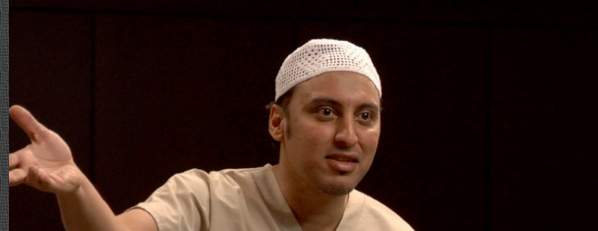

The Response: Sig Libowitz – Combatant Status Review Tribunals
January 11, 2010 marked the 8th anniversary since the Bush administration turned the US Naval Base at Guantanamo Bay, Cuba into a “enemy combatant” detention facility. Essentially re-commissioning the base as a torture chamber and legal black hole, where prisoner suicides are considered acts of war. As we’ve reported on in the last few months, the Obama administration has held on to the power to allow for a preventive detention system that would indefinitely jail terror suspects in the United States without trial. Meanwhile, military tribunals are now mainstream news, the tribunals are called Combatant Status Review Tribunals, where military justices discern who is an enemy combatant. These trials are also the subject of a 30 minute film titled The Response. The film is written and produced by actor Sig Libowitz who is transitioning from being an actor playing an attorney on the TV series Law and Order, to becoming a real lawyer. While in law school, Libowitz was tranfixed by the tribunal process of no jury and no defense lawyer. The film is based on actual court transcripts and is shortlisted for The Academy Award. The Response is screening at Columbia University’s School of Law on January 20th at 6pm.
Sig Libowitz:
- Michael Ratner: First of all there was no real process for people in Guantanamo. Then we won the right to Habeas Corpus, to go into a federal court and challenge their detention. At that point the Bush Administration set up a special process in Guantanamo.
- As we depict in the film, this is a process where the detainees don’t have a lawyer, they are not provided with the evidence that’s against them. The real transcripts told the story of the detainees and the judges in these CSRTs. From that I saw an incredible movie, and incredible opportunity.
- Because, I thought I had an understanding of what Guantanamo was all about, then I read the transcripts (of a CSRT) It gives a human dimension to the detainee and the military judges.
- Screening at Columbia Law School, Wednesday January 20th 6PM All the cast will be there and Shane Kadidal and Matthew Waxman. We’ve screened the movie at the Pentagon.
Guest: Sig Libowitz, an American lawyer, actor, film executive and director. Libowitz is notable for producing, directing and starring in a film, The Response, he wrote after reading some transcripts from Guantanamo captives‘ Combatant Status Review Tribunals. Libowitz is an executive for the acquisitions department of Turner Classic movies. He had a recurring roles in The Sopranos and Law and Order.
——————

Free Fahad Hashmi
Fahad Hashmi a Pakistani born American student, has spent nearly 2 1/2 years in solitary confinement in a Manhattan detention facility. He has been isolated for one of the longest periods in America as a suspect before trial. Hosts reported on this case in March 2008, we spoke with Fahad Hashmi’s father Syed Anwar, and Fahad’s attorney Sean Mayer. Fahad is accused of storing waterproof socks, ponchos and raincoats. The US charges were based on allowing an acquaintance “Janaid Babar” to store this rain gear in the closet of his London flat. Janaid Babar was a paid government cooperator who has been used to testify against Muslims around the world. Nicknamed ‘Supergrass’ by the British media, Babar was used by the UK government to testify against Omar Khyam and several other Muslim men in the so-called Fertilizer Case. Meanwhile Fahad’s trial is expected in January 2010, the prosecution will use Junaid as a main witness. Hashmi has been held under the SAM’s Special Administrative Measures that include a 23 hour a day lockdown, constant video surveillance of his cell and limited visitation.
(Fahad’s Brother)Faisal Hashmi:
- I’m under SAMs as our family is. Our visits with him, we can’t talk about it, but I can say from open court, he looks frail, he looks jittery He’s been in solitary confinement for 2 and half years.
- He’s in the Metropolitan Correctional Center a few blocks from here. Within his own cell, he’s videotaped at all times. He’s not allowed to talk out loud. He has a microphone in his cell.
- This is about deconstructing a human being, depriving him of his humanity. He’s 29 years old.
- Charged with four counts of material support for terrorism. He stored ponchos and rain gear.
- In 2004, this acquaintance while working on his Master’s degree stayed with Fahad.
- This was January 2004, he went to the US in April 2004, was arrested, and became a cooperating witness for the US government. At this time about 8 people got arrested, some in Pakistan, London and Canada, all on Junaid Barbar’s witness cooperation.
- In June 2006, my brother gets arrested. They tell Fahad, that Junaid gave the ponchos and gloves to Al-Qaeda and you gave material support to terrorists. You let Junaid use your cell phone, and Juanaid borrowed 300.00 from Fahad, saying that his ailing daughter needed the money. Fahad’s trial starts January 6, 2010
- FreeFahad.com This case has nothing to do with ponchos and socks.
Jeanne Theoharis:
- This is a case we need to be concerned about for those who value the first amendment. I had Fahad as a student in Brooklyn College in 2002
- There’s no way to understand this case without understanding the way Fahad was being watched many years ago even as a college student. We’ve sent a letter to the attorney general addressing 3 main issues, the conditions of his confinement, the way his due process is being violated and then first amendment issues.
- The letter was signed by more than 550 scholars and writers. Organizing among the Muslim student community.
- Theaters Against War calling attention to Fahad’s case.
- Free Fahad Vigil January 18, 2010
Guests: Fahad’s brother Faisal Hashmi and Jeanne Theoharis, an associate professor of political science at Brooklyn College, City University of New York. She was one of Fahad’s professors and she has been following this case.
———————————————————————
Civil Liberties, Gaza, Habeas Corpus, Human Rights, Targeting Muslims, Torture, Truth to Power, War Resister
Podcast: Play in new window | Download
Updates:
—

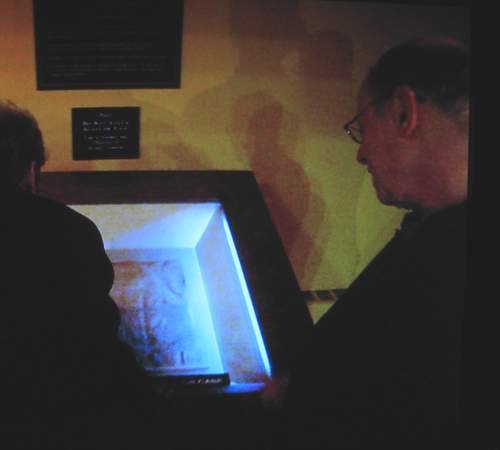
Fraunces Tavern: Magna Carta and the Foundations of Freedom
Hosts visit Fraunces Tavern Museum in lower Manhattan, where the Magna Carta document was on display from September 15 to December 15. It’s been nearly 800 years since it was originally drafted, and this copy has traveled from Lincoln Cathedral in England to New York City very few times. The first was for the 1939 World’s Fair.
Fraunces Tavern was built in 1719, it was a residence and then bought by tavern keeper Samuel Fraunces. It’s also known as the site where George Washington gave his farewell address to the officers of the Continental Army in 1783. When New York City was the nation’s capital, the tavern was rented to house offices of the Department of War, Treasury and Foreign Affairs.
Jennifer Patton/Tony Wellman:
- The tavern was originally built as a house by the Delancey family in 1719.
- There’s been a lot of changes to the buildings, restorations throughout the centuries, and it does make it the oldest surviving building in Manhattan. Light would fade the document, the lighting is no more than 50 lumens.
- This 1215 document was one of four reproduced. Hand copied in Latin, the language of education and communication of those days. This was the only way to spread news, there was no paper, this is on sheepskin.
- Taxation issues, women’s issues, trial by ones peers issues. Written in very tiny tiny script by a Monk.
- At the bottom you’ll see 3 holes for a ribbon where the King’s seal was attached.
- The idea started with a select few, and you can’t hold that back. The Magna Carta was lost for 600 years.
- Article 39 of the Magna Carta
- In the Razul v Bush case, they actually cited the Magna Carta. They said when King John at Runnymede in 1215 was forced to sign the Magna Carta
- We have since that time been against executive detention. I have a feeling that when King John affixed his seal on this document he had no intention of it existing for very long.
- Other charters, Providence plantations and Virginia charter, rights to property and not have it taken away for various reasons.
- Flushing Remonstrance. When New York was New Amsterdam, established by the Dutch in 1624. When Peter Stuyvesant came in 1657 all of New Amsterdam was is in disarray, lawlessness. Stuyvesant established hospitals, schools and also made it by law that you had to go to the Dutch church.
- These are ideas that came out of the Magna Carta, traveled to these shores and became deep within our own laws here. This is truly a revolutionary museum, the only museum dedicated to the American Revolution.
- Bill of Rights: Five of the amendments on the Bill of Rights come from the ideas of the Magna Carta.
- Estover – Charter of the Forest / The Royal Forest / Land that is claimed by the King.
- You can’t do anything on the land without the King’s approval. You can’t kill game, or fish. The Magna Carta was originally called the Charter of Liberties. Articles 48 and 47 of the Charter of the Forest.
- Charter of the Commons – Creative Commons. Magna Carta is being revived.
Guest – Educational Director of Fraunces Tavern Museum Jennifer Patton, and Communications Director, Tony Wellman. Fraunces Tavern was built in 1719, it was a residence and then bought by tavern keeper Samuel Fraunces. It’s also known as the site where George Washington gave his farewell address to the officers of the Continental Army in 1783. When New York City was the nation’s capital, the tavern was rented to house offices of the Department of War, Treasury and Foreign Affairs.
—————
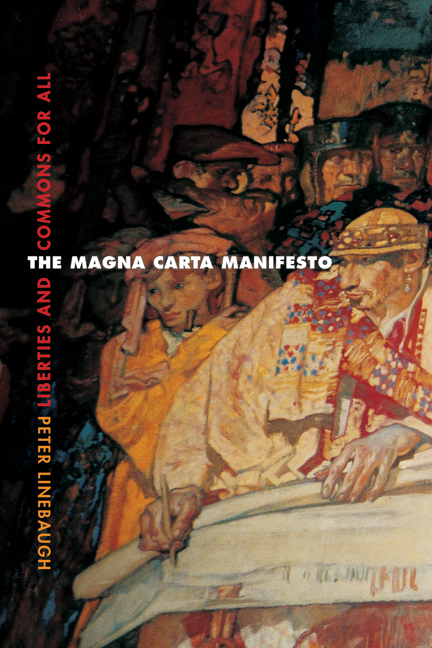
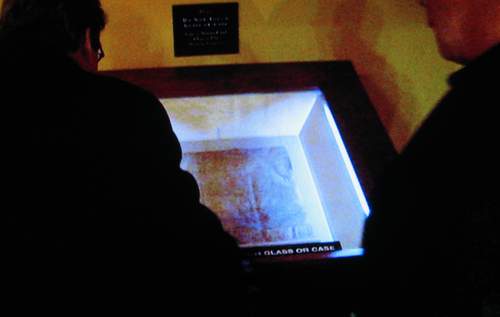
Magna Carta Manifesto: Liberties and Commons for All
In January of 2008, hosts interviewed author Peter Linebaugh on his book the Magna Carta Manifesto. It’s a sweeping history of the Magna Carta as a longstanding retraint against tyranny, the support of trial by jury and due process of law, the prohibition of torture and the rights of habaes corpus. Peter Linebaugh worked to construct the original history of the Great Charter and it’s little known companion, the Charter of the Forest, which was created to protect the rights of the poor.
Peter Linebaugh:
- On November 11, 1217, after the 1215 document was lost and civil war had resumed, the Magna Carta was founded again and a smaller version was produced called the Charter of the Forest.
- Charter of the Forest: Forms of protection of subsistence rights for people to the woodlands. The woods was the form that hydrocarbon energy took.
- There’s a parallel with the protection of woodlands for all, back then, and our own oil economy. Common Rights for oil, share in the wealth of commons.
- Origins of rights. Magna Carta and Charter of Forest dividing civil and economic rights. Similar to UN documents now.
- W.E.B. DuBois attacked the separation of rights of the “stomach” from rights of speech, or from civil and political rights and economic rights.
- DuBois argued with Eleanor Roosevelt at Breton Woods on behalf of millions of people in the third world.
- Gerrard Winstanley – “The Earth Belonged To No One” It is a common treasury for all. John Locke was afraid of them and developed his notions of private property in contrast to them.
- The lessons for us today, depends on creativity and widespread discussion that must occur at the grassroots.
- Historically, the ruling class has been able to retain it’s avaricious powers only to the extent that it keeps us apart. We’re familiar with gender and racial divisions, and we’ve become a Carceral continent.
- When we get together we learn that so much of our history has been stolen from us. Our land, wealth, we must recover the knowledge of our own Commoning.
Guest- Peter Linebaugh, Professor, a student of E.P. Thompson, received his Ph.D. in British history from the University of Warwick in 1975. A graduate of Swarthmore and of Columbia, he taught at Rochester, New York University, University of Massachusetts-Boston, Harvard and Tufts before joining The University of Toledo in 1994. Grants from the Max Planck Institute in Göttingen and from the Fulbright and Mellon fellowship programs have supported his research. Peter Linebaugh is currently at work on a study of an Irish insurrectionary during ‘the great transformation’ of the Atlantic revolutions.
——————————————————————————————-







